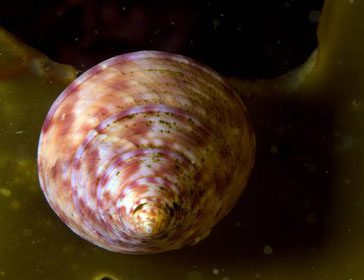Overview
The area of the Bay of Biscay and Galician Atlantic is characterised by a combination of waters from subpolar and subtropical gyres. This, along with other more complex factors, means the area is important in terms of upwelling and downwelling.
In addition, because this marine area encompasses almost 300,000 km2 within its territorial waters and Exclusive Economic Zone, the Galicia-Bay of Biscay area is Spain’s second largest ocean area after Canarian waters.
Despite this, only 250,000 ha are protected, in other words, less than 1%. Ninety-four percent of this protected area corresponds to the recently created Marine Protected Area of El Cachucho (Spain’s only exclusively marine area protected). The rest is distributed between the Galician marine reserve of Os Miñarzos (2,072 ha.) and Cederia Estuary (800 ha.), the National Park of the Atlantic Islands (7,200 ha.), and the protected biotopes of Gaztelugatxe (129 ha.) and Deba-Zumaia (3,740 ha.). In other words, there are 6 protected marine spaces in the entire Galicia-and the Spanish Bay of Biscay area: 3 in Galicia, 1 in front of Asturias and 2 in the Basque Country.
If Spain finally expands its Exclusive Economic Zone to 350 nautical miles, Spanish waters in the North Atlantic would increase to 450,000 km2 and, as such, the protected area would be reduced to only 0.7%. All of these factors make the coastal area of Galicia and the Bay of Biscay areas of special interest for study.
The poor state of fishing resources, the large amount of waste found here and the need to comply with international objectives to halt the loss of biodiversity requires the immediate creation of new marine protected areas in the Cantabrian Sea and Galician Atlantic waters.
After the 2008 expedition, Oceana identified various areas along the Galicia-Cantabria coast that are in need of urgent protection. Not only are these areas of ecological importance, they also harbour wide varieties of species and habitats, as is the case of Jaizkibel and Capbretón in Euskadi, Cape Ajo and seamounts including Castro Verde and Maruca in Cantabria, Avilés canyon and Cape Peñas in Asturias and Estaca de Bares or the expansion of the Park of the Atlantic Islands in Galicia, among others.
Oceana urgently requests the extension of the National Park of the Atlantic Islands, in Galicia, and the creation of an ecological marine corridor between San Sebastian and Biarritz, which would protect the coastal area facing the Ulia and Jaizkibel Mountains in the Basque Country’s.
The work carried out by Oceana in the Galician Atlantic and the Bay of Biscay provides new information about areas of ecological interest to expand the network of marine protected areas. As such, Oceana contributes to the achievement of Spain’s objectives and commitments, including the EU Habitats Directive, the OSPAR convention and UN Biodiversity Convention agreements, because all of these require the halting of the loss of biological diversity and the creation of new protected areas.
In order to reach these objectives, at least 10% of the marine area under Spain’s jurisdiction must be protected, including the EEZ in each one of the bioregions, such as the Cantabrian Sea and Galician Atlantic waters.
For two and a half months, a crew of 13 people travelled along the Galician and Cantabrian coasts on board the Oceana Ranger research catamaran. A total of 51 dives were carried out with an ROV (Remote Operated Vehicle) and 54 with professional divers. This made for a total of over 100 hours of video footage and more than 4,000 underwater photographs. The sampling sites were chosen depending on various factors, such as the existence of possible biodiversity “hot spots”, the availability of bibliographic material about the area, the empirical knowledge of fishermen, divers and researchers, and the lack of information.
A wide variety of features were identified such as seamounts, canyons, caves and overhangs, along with seagrass beds, kelp forests, maërl beds, coral and gorgonian gardens and reefs, amongst others.
The study also detected threats such as the presence of hundreds of invasive species, contamination, discards and bycatch of protected species, overexploitation of fishing resources, the impacts of fishing over vulnerable seabeds, the effects of the climate change on water temperature and the distribution of species, as well as the impact of mineral extraction.



